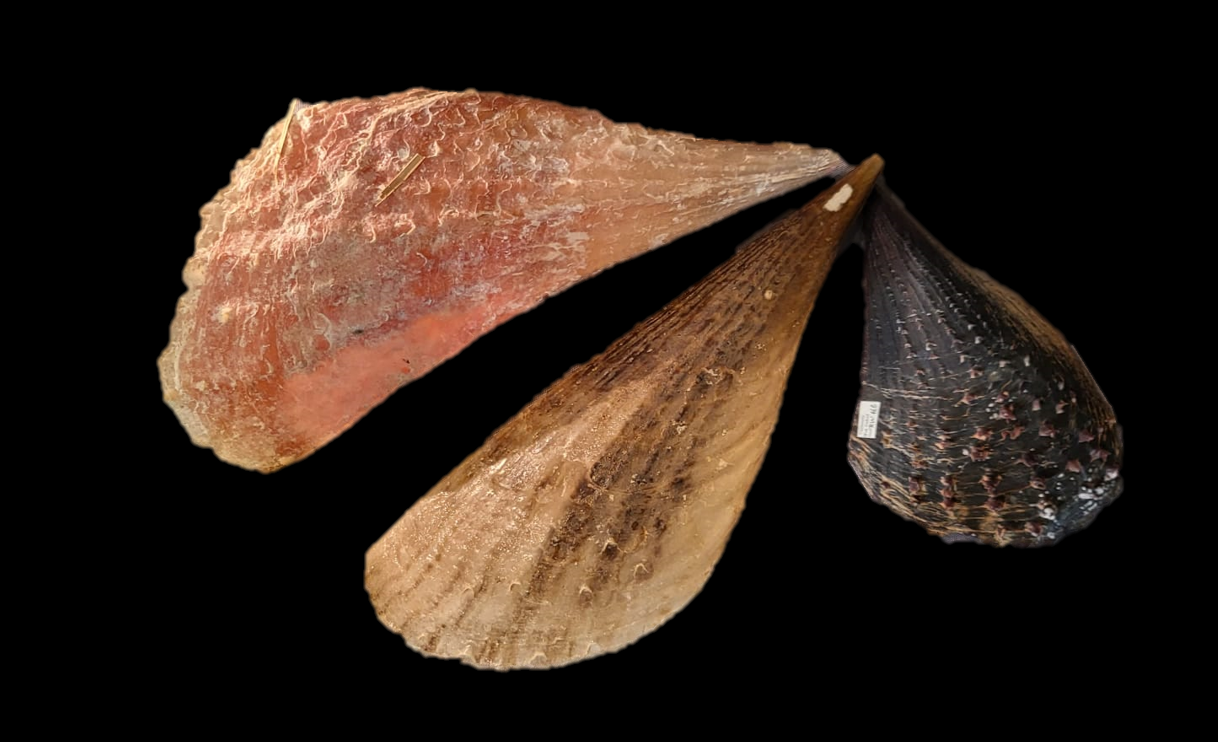Perfect Pens is a new temporary-exhibit at the Oxford University Museum of Natural History.
Bivalved molluscs in the family Pinnidae, or Pinnids, are known as pen shells due to the resemblance of their shell to a quill. There are just over 50 recognised living species of pen shells, which can be found across the tropical and temperature waters of the Pacific and Atlantic.
In life, these animals bury themselves in the marine sediment leaving the open end of the shell exposed in the water. They feed by generating an inhalant current and extracting food particles from water. In some cases, they can also use acid-secreting organs to clean prey items off their shells.
In water their shells are fast-growing, rapidly regenerating and flexible. However, when dried out they lose this flexibility, often presenting problems for museum preservation of these beautiful shells.
Globally Pinnids have been exploited for their pearls and their bysuss, the silky fibers they use to attach themselves to the rocks, which can be worked into sea silk. The animals themselves are also eaten, and their attractive shells are sought after by collectors, worked into jewellery, or used as plates.
Due to habitat loss, destruction by dredging, overharvesting and disease, some Pinnid species are in decline. Several species, as well as the ecosystems they create, are now protected by law.
Images: (Header) Three pen shells. (Right) Some pinnid specimens on display in the Presenting Case, including an acid organ. Visit the Museum to learn more about these incredible examples of pen shells.

